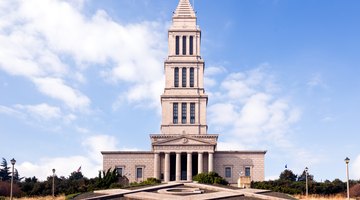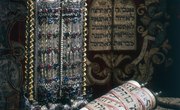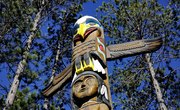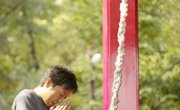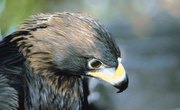In the early 17th century, a series of texts known as the Rosicrucian manifestos convinced many people in Europe of the existence of a secret society dedicated to healing, mysticism and occult knowledge. The Rosicrucian Order described in the manifestos may never have existed in reality, but popular fascination with the Rosicrucians stimulated interest in the Freemasons, a real-life secret society many people believed to be a front for the Rosicrucians. However, there are a number of differences between the two traditions.
Different Origins
In the Rosicrucian manifestos of 1614 to 1616, a man named Christian Rosencreutz was said to have traveled to Damascus and learned the secrets of both science and magic, before returning to Germany to found the secret Fraternity of the Rosy Cross, or Rosicrucian Order. The members of this order were said to swear an oath to cure the sick for free using their secret knowledge. Although the Rosicrucian society described in the manifestos probably did not exist, according to "Western Esotericism and Rituals of Initiation" by Henrik Bogdan, the popular fascination with the Rosicrucians may have inspired the founders of Freemasonry. The Freemasons may derive originally from medieval guilds of professional stonemasons, but modern Freemasonry was founded in 1717 with the establishment of the Grand Lodge of England.
Different Teachings
The original Rosicrucian manifestos do not present a clear set of teachings, but they do claim that Rosicrucian initiates possess secret knowledge of mathematics, science and healing -- including a "universal medicine" capable of curing all diseases. The manifestos also state that the goal of the society is to attain knowledge of both God and nature, or in other words both religion and science. Freemasonry uses a series of allegorical rituals as a tool for teaching the ethics of the society, including self-improvement, religious liberty and democratic principles.
Differences in Symbolism
Rosicrucianism and Masonry use different symbols. The rosy cross is the most recognizable symbol of Rosicrucianism, and it can be interpreted in more than one way. The cross can indicate Jesus Christ and the rose the Virgin Mary. The cross can also stand for resurrection or death, and the rose can stand for nature and its power of creation. The square and compass with a letter G in the center is the most recognizable symbol of Freemasonry. These symbols can also be interpreted in more than one way. For instance, the G can stand for either God or geometry. The compass can also represent geometry, the art of building and the concept of staying within proper boundaries when dealing with other people. The square can symbolize accuracy.
Modern Rosicrucians and Masons
The 17th-century Rosicrucian manifestos continue to inspire the creation of new secret societies using the Rosicrucian name. For instance, the Ancient Mystical Order Rosae Crucis, also known as AMORC, is described on its website as a continuation of a mystical tradition going back not only to Christian Rosencreutz but to ancient Egypt. However, it was actually founded by a Mason named Harvey Spencer Lewis according to "Freemasonry -- Rituals, Symbols and History of the Secret Society" by Mark Stavish. Lewis claimed to have been initiated into the secret Rosicrucian order in 1909. AMORC teaches a system of self-improvement and personal development based on what it describes as ancient esoteric knowledge. The Freemasons remain a popular international fraternal order that raises money for hospitals and other charitable causes. There are approximately 4 million masons around the world according to the website of the Masonic Service Association of North America.
Related Articles
References
- Keats, Hermeticism, and the Secret Societies; Jennifer N. Wunder
- Western Esotericism and Rituals of Initiation; Henrik Bogdan
- Cogito, Ergo Sum: The Life of René Descartes; Richard Watson
- Language Myths, Mysteries and Magic; Karen Stollznow
- Freemasonry: Frequently Asked Questions
- Rosicrucian.org: The Ancient and Mystical Order Rosae Crucis
- Freemasonry - Rituals, Symbols and History of the Secret Society; Mark Stavish
Writer Bio
Scott Thompson has been writing professionally since 1990, beginning with the "Pequawket Valley News." He is the author of nine published books on topics such as history, martial arts, poetry and fantasy fiction. His work has also appeared in "Talebones" magazine and the "Strange Pleasures" anthology.

